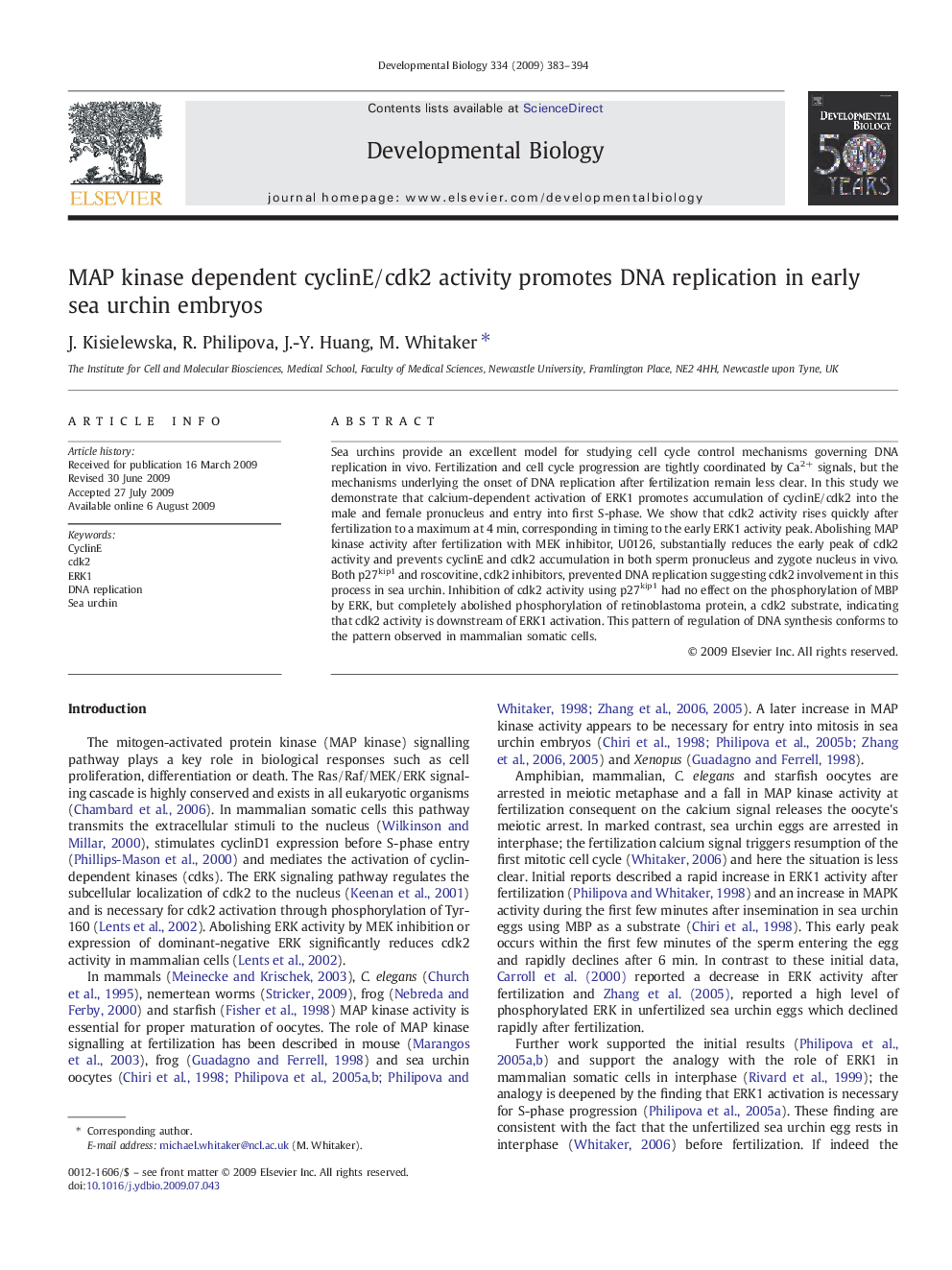| Article ID | Journal | Published Year | Pages | File Type |
|---|---|---|---|---|
| 10933258 | Developmental Biology | 2009 | 12 Pages |
Abstract
Sea urchins provide an excellent model for studying cell cycle control mechanisms governing DNA replication in vivo. Fertilization and cell cycle progression are tightly coordinated by Ca2+ signals, but the mechanisms underlying the onset of DNA replication after fertilization remain less clear. In this study we demonstrate that calcium-dependent activation of ERK1 promotes accumulation of cyclinE/cdk2 into the male and female pronucleus and entry into first S-phase. We show that cdk2 activity rises quickly after fertilization to a maximum at 4Â min, corresponding in timing to the early ERK1 activity peak. Abolishing MAP kinase activity after fertilization with MEK inhibitor, U0126, substantially reduces the early peak of cdk2 activity and prevents cyclinE and cdk2 accumulation in both sperm pronucleus and zygote nucleus in vivo. Both p27kip1 and roscovitine, cdk2 inhibitors, prevented DNA replication suggesting cdk2 involvement in this process in sea urchin. Inhibition of cdk2 activity using p27kip1 had no effect on the phosphorylation of MBP by ERK, but completely abolished phosphorylation of retinoblastoma protein, a cdk2 substrate, indicating that cdk2 activity is downstream of ERK1 activation. This pattern of regulation of DNA synthesis conforms to the pattern observed in mammalian somatic cells.
Related Topics
Life Sciences
Biochemistry, Genetics and Molecular Biology
Cell Biology
Authors
J. Kisielewska, R. Philipova, J.-Y. Huang, M. Whitaker,
